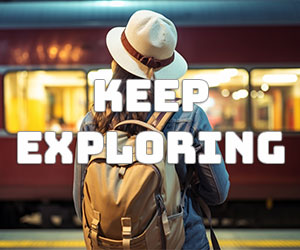Get a look into what life was like in Korea from the 17 century to the 20th century for the ordinary folk in Korea at the National Folk Museum of Korea.

Located at the eastern side of Gyungbokgung Palace, the National Folk Museum of Korea presents an interesting look into life in Korea from a variety of different perspectives. It is an interesting museum in Seoul that will provides insights into life in Korea of the past and present.
How Much is Admission to National Folk Museum of Korea
Entrance fees to the National Folk Museum of Korea is free. It complements any visit to the Gyeongbokgung Palace, which is ticketed.
What’s at the National Folk Museum of Korea
The National Folk Museum of Korea is divided into three different galleries. These present different perspectives of traditional life in Korea.
Gallery 1: Korean Traditional Daily Life

The first gallery, Korean Traditional Daily Life, cycles through the life in day of various traditional Korean villagers.
It follows the activities from dawn to dusk of a confucian scholar, a farmer, an artisan who plies his trade at his workshop and a woman and child.
These scenes of the past are contrasted with the daily scenes of life in modern day Korea. It also presents how the values still play a role in society, despite the changes in circumstances and situations.
Gallery 2: A Year in Korea

Taking a wider view, the second gallery at the National Folk Museum of Korea expands the view out from daily to the cycles that take place in a year in the life of the Korean people.
The exhibits here focus on life in the 19th to the 20th century.

The passage of time is marked by the seasons. In Korea, besides Spring, Summer, Autumn and Winter, there are also special occasions that take place throughout the year.
For example, Jeongwol or the First Lunar Month, is an important time for the Korean people. Dano or the Festival of the Fifth of the Firth Month, marks the arrival of summer. Dongji or the Winter Solstice is another milestone as the new year approaches.

There are also displays showing the livelihoods, foods and clothing worn by Koreans during throughout the year.

We particularly enjoyed the section which has been made to look like a hanok village or traditional Korean house village with the seasons passing by.

It is a great spot to sit down and simply imagine what it must have been like to live in a traditional Korean village. Of course, if you do want to check out a real hanok, you can do so at the house museum at Bukchon Hanok Village.
It is a condensed and intriguing look into the life for ordinary people in Korea.
Gallery 3: Korean Life Passages

Birth, growing up, marriage and death. These are all part of life’s moments and at the third permanent gallery at the National Folk Museum of Korea, these are explored in greater detail.

Inside this gallery, you can get a look at important life events. Amongst these are studying for a state exam and the coming-of-age ceremony held for males at 20 and for women at 15.

This exhibition gallery is the most contemporary as many of the life events and activities presented are similar to what you would in other cultures but in different forms.
It is interesting to pay a visit to the Korean Life Passages exhibition and also relate the life events back to our own culture.
National Folk Museum of Korea Children’s Museum

The National Folk Museum of Korea also has a children’s museum area for younger kids.
Other Amenities

There is also a museum shop that sells book about Korean culture and a cafe at the museum.
Often missed is the outdoor exhibition area. Highlight at this area is an ochondaek, a traditional residential dwelling, and re-creations of traditional streets.
The National Folk Museum of Korea is worth visiting for anyone who is interested to find out more about traditional Korean life and culture. We liked that it was presented in a comparatively condensed manner and its convenient location beside the Gyeongbokgung Palace.
It also provides a good contrast to the information presented in the National Palace Museum of Korea, which looks into the life of royal court of the Joseon dynasty.

If you are visiting Gyeongbokgung Palace, you can stop by the National Folk Museum of Korea if you exit via the east side of the palace. It is prominently marked out by the pagoda.
Get more tips on visiting the Gyeongbokgung Palace.
National Folk Museum of Korea
Where:
37 Samcheong-ro, Jongno-gu, Seoul 03045, Republic of Korea
서울특별시 종로구 삼청로 37
Website


